
DEEP INTO THE COMMUNITY
Black Diamond Athlete Angela Hawse is a guide for change.
Add 100 EUR more to quality for free Shipping!
€0,00 EUR
THURSDAY, DECEMBER 10, 2020
Built from hand-peeled timbers and adobe brick, Rolando Garibotti’s small cabin sits on a main street in the wind-swept tourist outpost of El Chaltén, Argentina. The house’s sturdy frame is a necessity in these parts—at nearly 50° south, El Chaltén sits in a sort of atmospheric line of fire, where ocean-bound storms circle the globe unimpeded by land, gathering momentum before smashing into the tip of South America. Near the door, a small, hand-carved sign reads “World’s Worst Weather,” but inside, it’s warm and serene, and a kettle on the stove boils water for maté.
Story: Andy Anderson - Photos and Video: Rolo Garibotti, 3 Strings Productions
This house has long been a sort of informational stronghold, where alpinists from around the world seek council on everything from weather forecasts to what gear to bring on a particular climb. There are countless unknowns for the many who come looking for adventure in Patagonia, and Garibotti, known almost universally as Rolo, likely knows these mountains better than anyone alive.
“For many years this house had a revolving door. Part of the deal of writing the guidebook was to get some peace and quiet in here,” he says with a smile.
The book he’s referencing is Patagonia Vertical, the first proper climbing guide to the Chaltén massif that he published with his girlfriend, Dörte Pietron, in 2012. Over 20 years of experience in these mountains and a deep interest in climbing history evolved into the website Pataclimb.com, an online compendium of route info that formed the foundation for Patagonia VerticalBut publishing a highly detailed, full-color guidebook has done little to stem the incoming tide of climbers, both here in Rolo’s kitchen and in the mountains of Patagonia. It’s a curious move for a man who has dedicated his life to the pursuit of adventure. But one look at the granite peaks out his window, and it’s not hard to imagine why he’d want to share this place.
“When I have somebody very inexperienced walk into this house and ask for information, I always have to take it with care, because it might be myself at 15 about to have an experience that is very important to their lives.”
On the wall above the long wooden countertop in Rolo's kitchen, a seemingly benign collection of sticky notes gives a storied glimpse into his history with this place. The words hastily scrawled on the notes like a grocery list—Torre, Maté Porro, Vientos—are actually abbreviations for some his notable climbs in the range, accompanied by correlating temperature and weather data for each particular weather window.
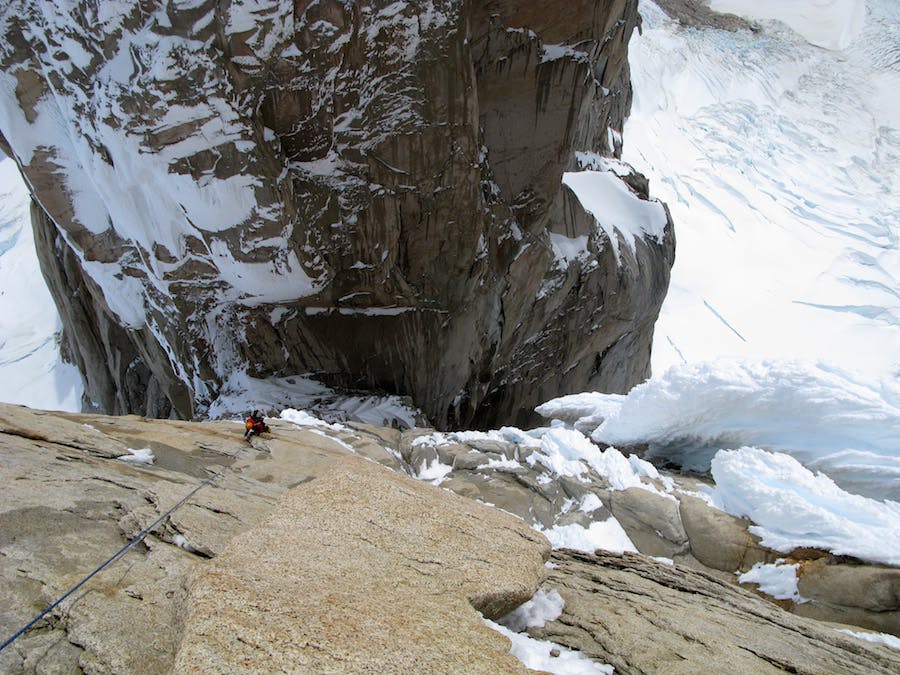
In 1996 he and Doug Byerly were the first to climb the complete north face of Fitz Roy in alpine style, which at the time was a major departure from the common approach of using fixed ropes. Nine years later, with Ermanno Salvaterra and Alessandro Beltrami, they completed the much-tried first ascent of the north face of Cerro Torre, a steep, wild line of rime ice and granite. This new route, El Arca de Los Vientos, was the final question mark in the monumental and much-tried Torre Traverse, which Rolo and Colin Haley finally completed over three days in 2008.
“Climbing a new line is an opportunity to have a grand adventure,” he says. “You can make a mountain as big or as small as you want. You can make it very small if you bring fixed ropes, a 10-man team, a helicopter to bring your stuff to the base and a power drill for the blank sections. Or you can make it really big—two buddies, just the packs on your backs, and off you go to climb.”
Rolo has shown a near lifelong devotion to “making it big,” and although he says the mountains of Patagonia are too technical for fitness to be much of a factor, the common thread in his climbing career has been a seemingly singular focus on speed and efficiency. He has acquired stacks of record-setting ascents from Yosemite to Alaska, but is perhaps best known in the US for his speed record on the Grand Traverse, a 10-peak linkup in Wyoming’s Tetons that covers 14 miles and 12,000 feet of elevation gain with climbing up to 5.8. In August of 2000, Garibotti sprinted the Traverse in an unfathomable six hours and 49 minutes, a record that still stands today.
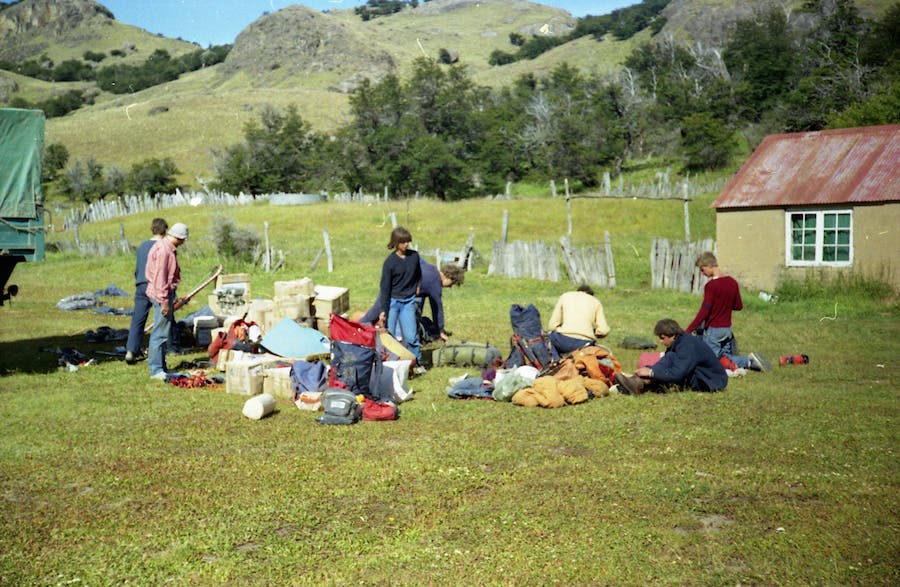
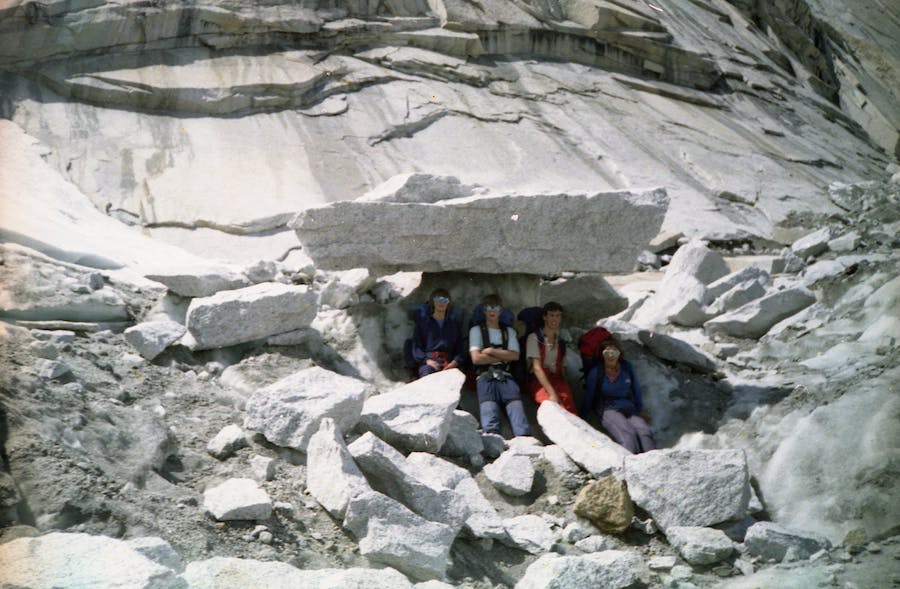
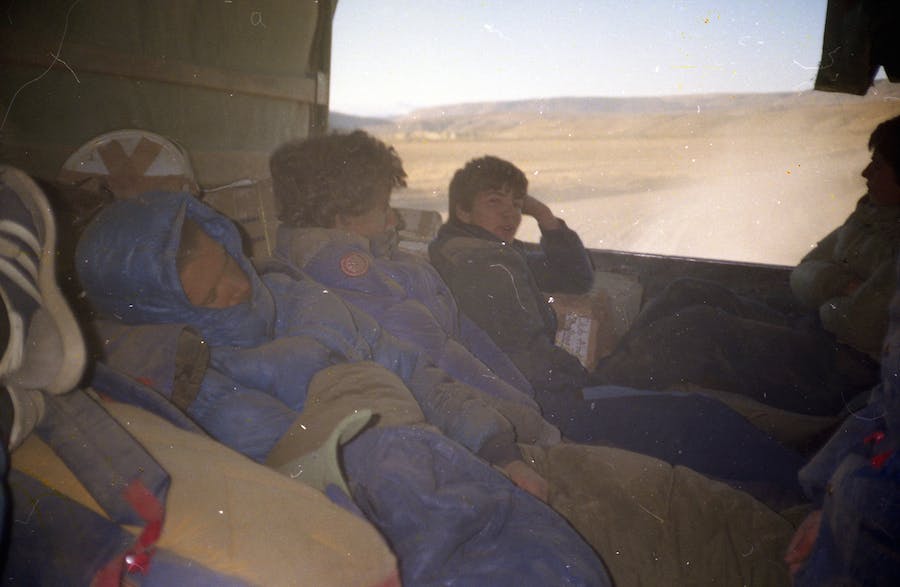

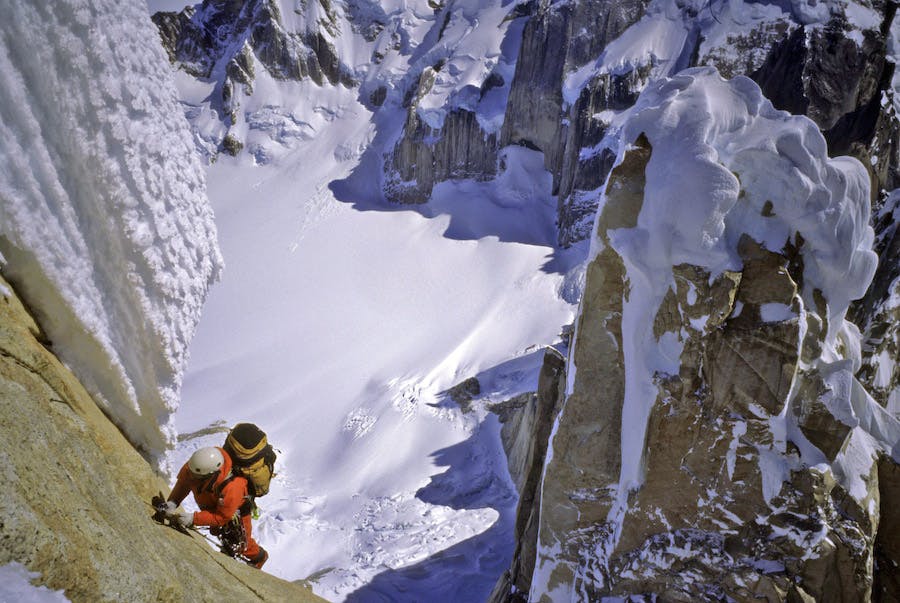

“People come and they see that the Supercanaleta is 5.9 and 85 degrees and they think, ‘Oh, I can do that,’ and they have no clue how to judge the rest of the environmental difficulties.”
If an increase in accidents is the symptom, then crowds are likely the condition, something his guidebook, improving weather forecasting and modern amenities will only exacerbate. The Chaltén massif, despite its quality and density, is but a miniscule slice of this jagged landscape, and Rolo doesn’t seem to fret about the future of adventure, for himself or for the many who dream of climbing here one day.
Through the crème-colored linen curtains of Rolo’s living room, trees bend in the indefatigable winds and we gaze out at the cap-like lenticular clouds hovering over the unyielding summits of Fitz Roy and Poincenot.
“We have almost 1,500 miles of Patagonian Andes, we have endless mountains that are unmapped, uncharted,” he says. “All I need to do is leave my door, hike for a day and a half and I’m out there. And if I leave the sat-phone I will have no forecasts, and if I leave all the books behind … I’ll go and have a proper adventure.”
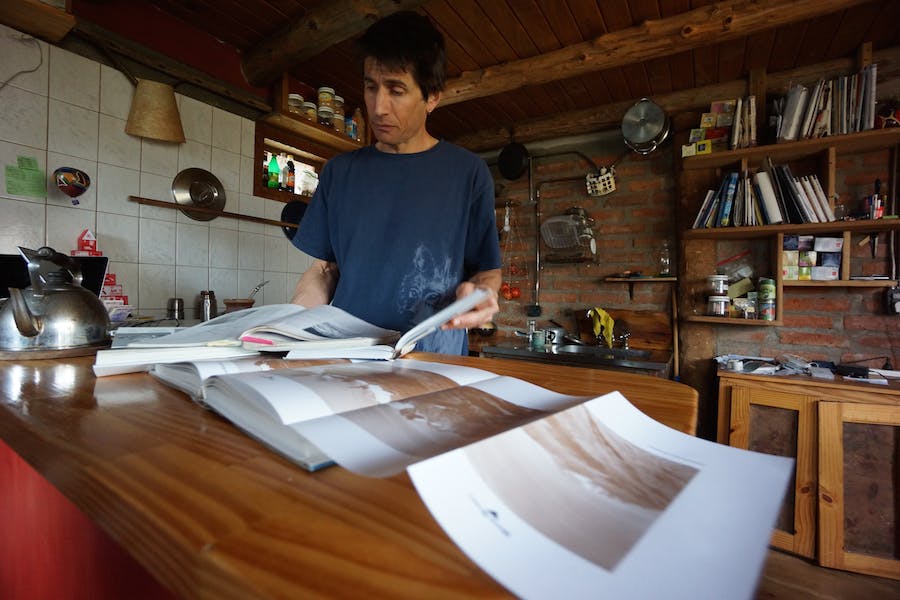
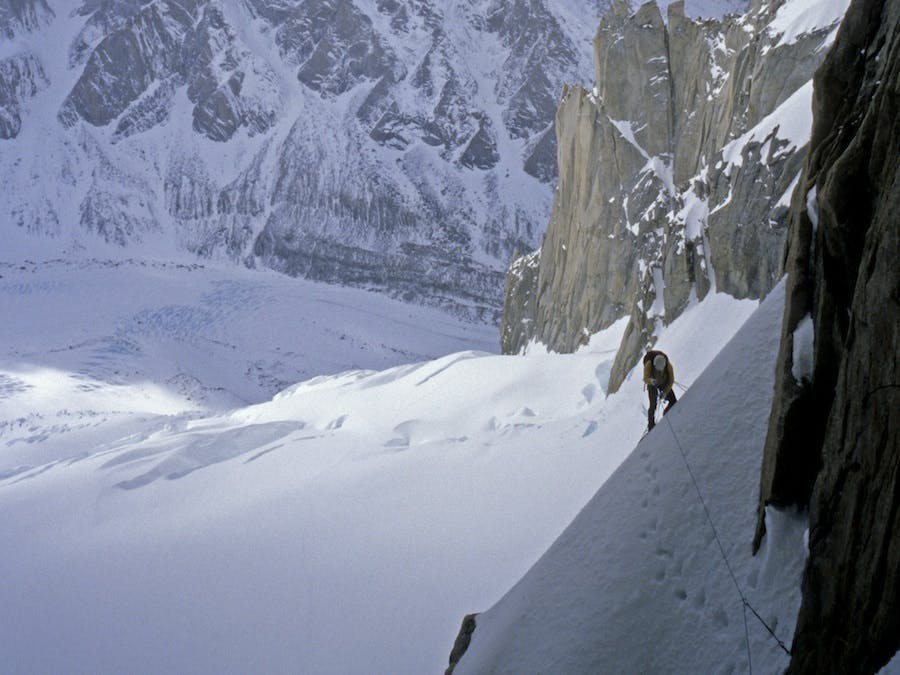




Follow BD Athlete Yannick Glatthard deep into the Swiss Alps as he shares his home...
Follow BD Athlete Yannick Glatthard deep into the Swiss Alps as he shares his home mountains with close friends.

Follow Dorian Densmore and Mya Akins for another winter season of steep Alaskan spines, backyard...
Follow Dorian Densmore and Mya Akins for another winter season of steep Alaskan spines, backyard couloirs, and deep adventures in the mountains.


Watch BD Athlete Alex Honnold throw down on some hard trad high above Tahoe.



In 2012, filmmaker and photographer Ben Ditto, and professional climber Mason Earle equipped an immaculate...
In 2012, filmmaker and photographer Ben Ditto, and professional climber Mason Earle equipped an immaculate line in Tuolumne’s high country. But their attempts to free the route were thwarted when Mason’s life changed drastically. With the help of Connor Herson, Ditto and Mason found a way to keep the dream alive.
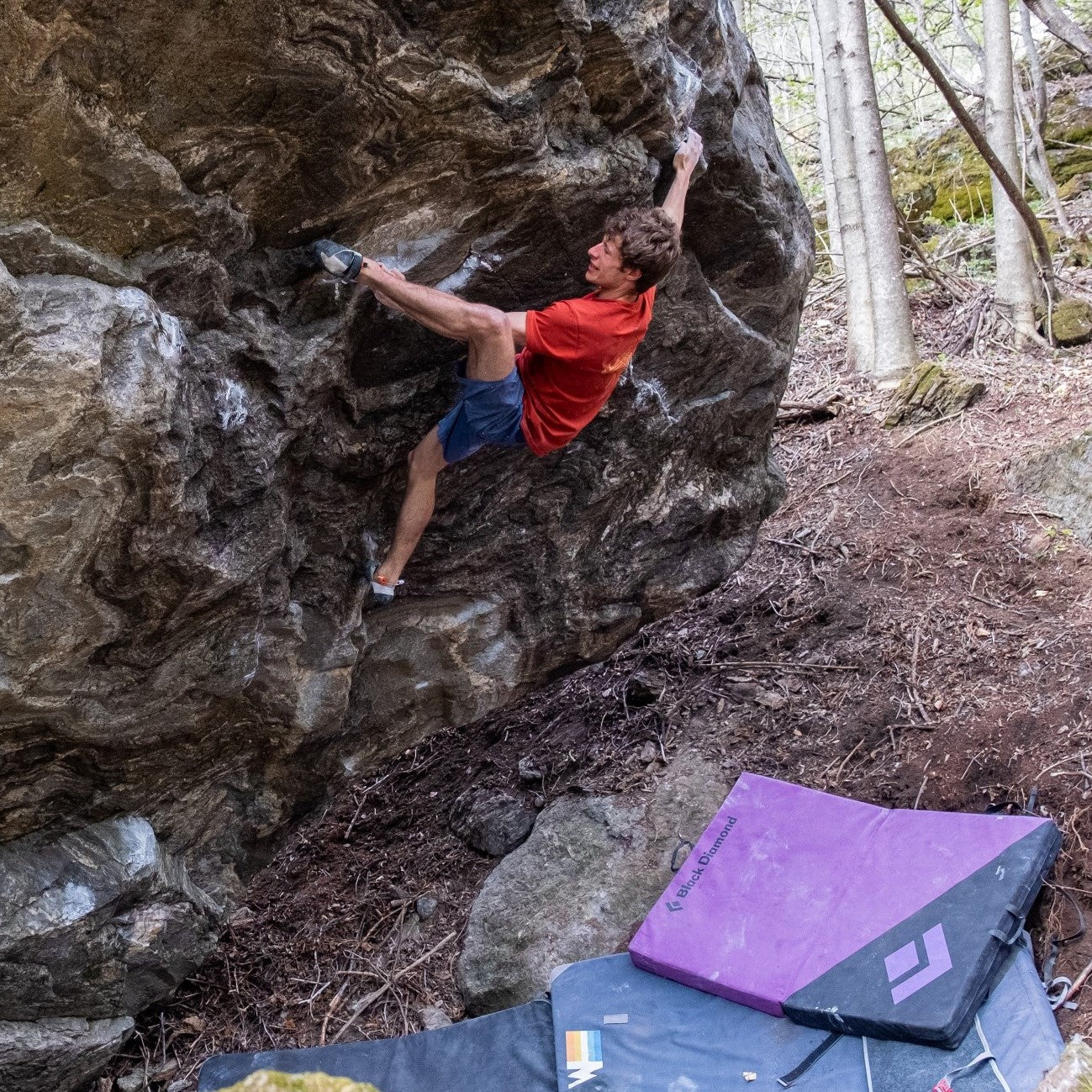

Watch and learn as our Field Test Coordinator runs you through a step by step...
Watch and learn as our Field Test Coordinator runs you through a step by step process of trimming and setting up any STS-style Black Diamond skin.


Every climber has a few lines they dream about. Whether inspired or haunted—or sometimes both—these...
Every climber has a few lines they dream about. Whether inspired or haunted—or sometimes both—these lines can push us beyond what we thought we were capable of, in turn teaching us who we really are. BD Ambassador Ethan Salvo recently restructured his entire life to focus on two climbs that pulled him into the void with only one way out … getting to the top. This is his story of sending Dreamcatcher and becoming the first Canadian to climb V16 in the same week.

BD Athlete Connor Herson spent as many weekends as possible in the Valley this spring...
BD Athlete Connor Herson spent as many weekends as possible in the Valley this spring during a grueling quarter at Stanford. The objective? Ground up, in-a-day ascents.
